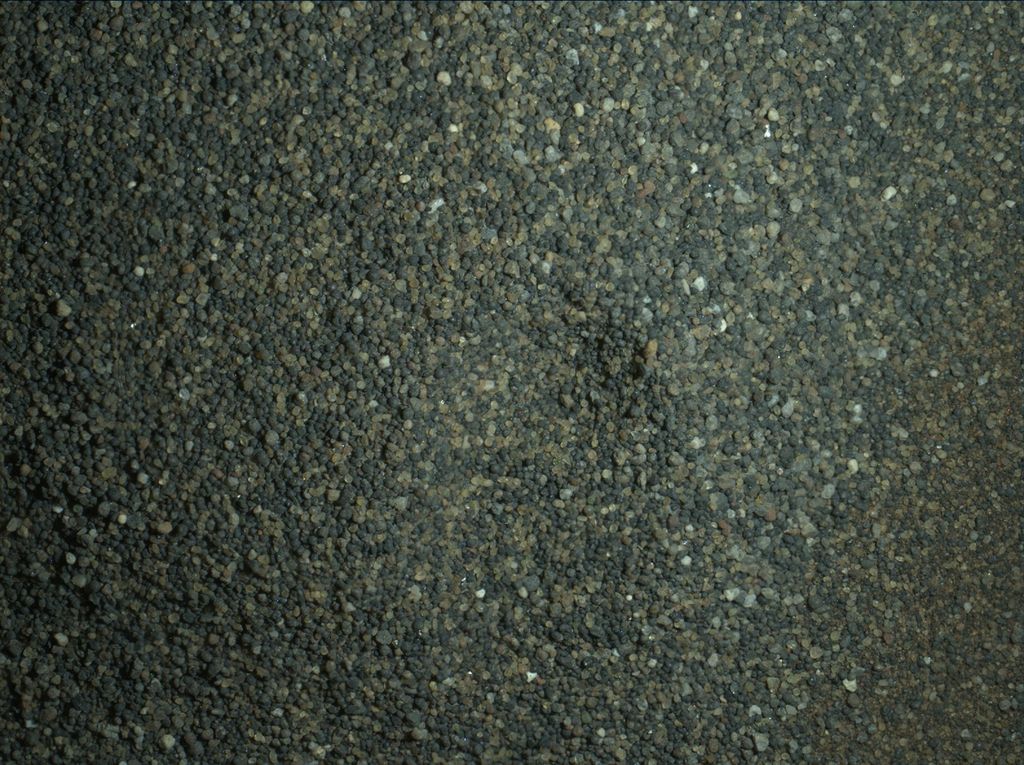
NASA's Mars rover Curiosity has snapped a selfie featuring sunshine and lots of sand, but it's no vacation pic.
The car-size Curiosity rover was hard at work investigating Namib Dune — part of a larger complex of shifting dark Martian sand called Bagnold Dunes — when it captured the photo on Jan. 19.
Curiosity has been studying Bagnold Dunes for about two months now, helping mission scientists better understand how the wind creates and shapes dune fields on Mars. [The Top 10 Space Robot Selfies]
As part of this work — the first up-close examinations of dunes on a world beyond Earth — the six-wheeled robot has scooped up three samples of Namib Dune for analysis by its onboard instruments, grabbing two on Jan. 19, and another one on Jan. 22, NASA officials said.

Processing of the third sample did not go according to plan, however. An actuator in the processing device on Curiosity's 7-foot-long (2.1 meters) robotic arm failed to function properly, leaving part of the sample trapped inside a sort of tunnel, NASA officials said.
"The rover responded properly to this unexpected event," Curiosity deputy project manager Steve Lee, of NASA's Jet Propulsion Laboratory in Pasadena, California, said in a statement. "It stopped moving the actuator and halted further use of the arm and sampling system."
The incident, which will prohibit analysis of the third sample, is under investigation. (The rover's onboard instrument suite will still study the second sample scooped from Namib Dune, NASA officials said.)
Breaking space news, the latest updates on rocket launches, skywatching events and more!
The Bagnold Dunes lie on the northwestern flank of Mount Sharp, a 3-mile-high (5 kilometers) mountain at whose base Curiosity arrived in September 2014. The rover is steadily climbing up through Mount Sharp's lower reaches, studying the many rock layers for clues about how and why Mars shifted from a relatively warm and wet world in the ancient past to the cold, dry planet it is today.
The new Curiosity sand-dune selfie is actually a composite of 57 separate images captured by the Mars Hand Lens Imager camera at the end of the rover's arm. The arm was not visible in the photos (or portions of photos) used to construct the selfie, NASA officials said.
Follow Mike Wall on Twitter @michaeldwall and Google+. Follow us @Spacedotcom, Facebook or Google+. Originally published on Space.com.
Join our Space Forums to keep talking space on the latest missions, night sky and more! And if you have a news tip, correction or comment, let us know at: community@space.com.

Michael Wall is a Senior Space Writer with Space.com and joined the team in 2010. He primarily covers exoplanets, spaceflight and military space, but has been known to dabble in the space art beat. His book about the search for alien life, "Out There," was published on Nov. 13, 2018. Before becoming a science writer, Michael worked as a herpetologist and wildlife biologist. He has a Ph.D. in evolutionary biology from the University of Sydney, Australia, a bachelor's degree from the University of Arizona, and a graduate certificate in science writing from the University of California, Santa Cruz. To find out what his latest project is, you can follow Michael on Twitter.
